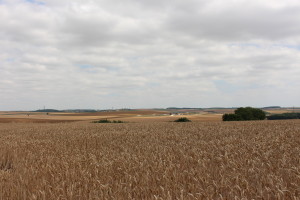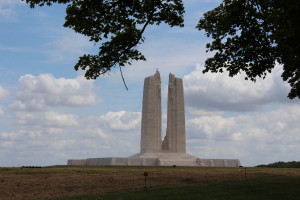July 20: Many people call this area the “bread-basket” of France, and it’s easy to see why. The wheat fields extend to the horizon in all directions. A tennis ball dropped at your feet would go nowhere. So it’s easy to see why the invading Germany army expected a fast passage to Paris when they invaded in 1914.
For the first while, it went well for them (as wars go), and then the French battled back. At the Meuse they held a line and the long war of attrition began in earnest. As a boy I never understood “trench warfare”. If armies were constantly moving, when did they find the time to dig a 2 metre deep trench?
In fact, the front line barely moved during the 4 years of the war. The enemies confronted each other across no-man’s land and the slaughter continued throughout that time. It is said that this was the first “industrialized war”. New weapons appeared including machine guns, grenades, poison gas, tanks and gigantic flame-throwers. There is a very poignant photo in the museum at Albert showing troops going “over the top” standing fully upright, walking straight into machine gun fire. One wonders about their ability to follow orders when it had been clearly demonstrated that it was a deadly approach. One also wonders about the morality of continuing to send men to a certain death for days in a row, repeating a strategy that was obviously futile.
It is said that 4 million men – for it was virtually all men at that time – died during the war. A generation of scientists, artists, doctors and teachers lost forever. One wonders what they might have accomplished for the world had they lived.
Canada lost about 60,000 men. The names of the battles are familiar: Ypres, Beaumont Hamel (where all but 68 men of a battalion of Newfoundlanders were killed), Courcelette, and of course Vimy. Each of these sites has it’s own monument and cemetery. It seems that there are cemeteries and monuments everywhere.
Canada’s national monument is at Vimy. It is tremendously emotional to visit the monument and see the names of these men inscribed on it’s four outer walls. Something I will not soon forget.